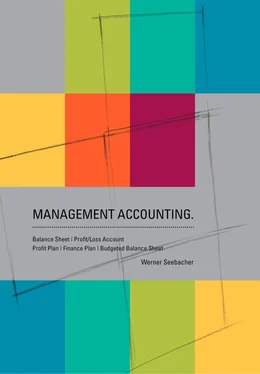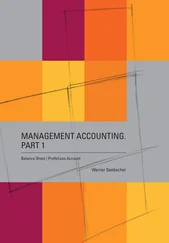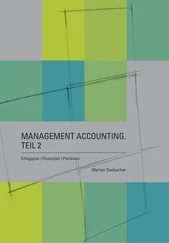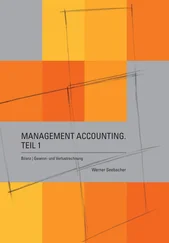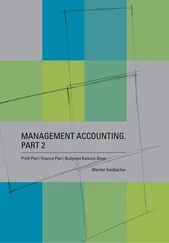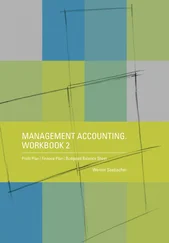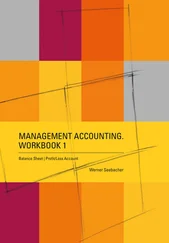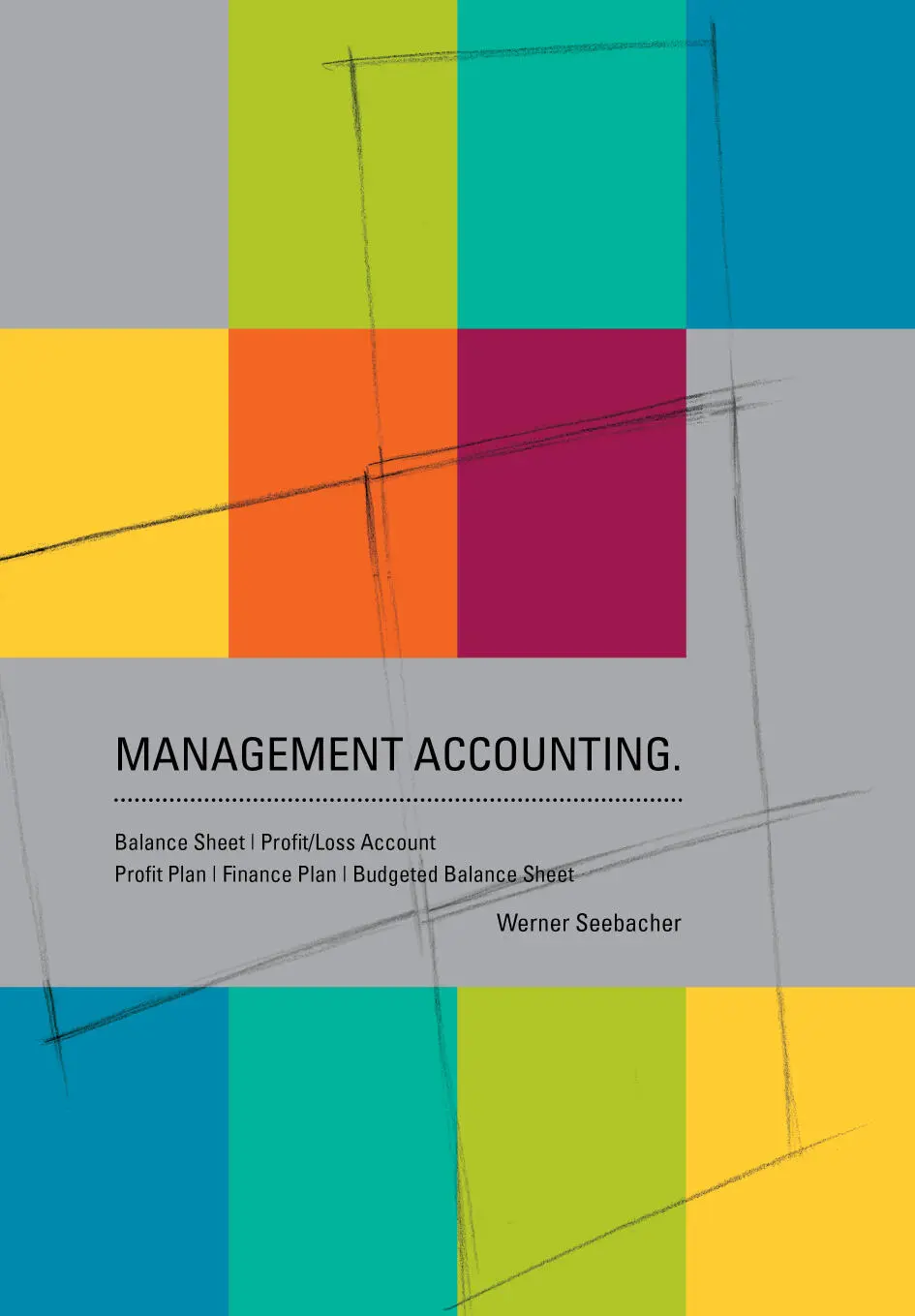
Werner Seebacher
Management Accounting.
Balance Sheet | Profit/Loss Account
Profit Plan | Finance Plan | Budgeted Balance Sheet
Author
Werner Seebacher
ISBN 978-3-7375-5375-9
First Edition 2015
www.management-accounting.net
Prohibition of photocopy | Prohibition of multiplication
The free use of this book – rule of multiplication for use in schools and universities – cannot be applied on this book, as it has been intended for individual teaching purposes from its quality and its specification (see § 42 Abs 6 öUrhG; § 53 Abs 3 dtUrhG). Any multiplication can be fair use only with prior approval by the author.
Disclaimer of liability
Please note that despite careful processing all data, annotations, presentations and calculations in this book, as well as in the numerical examples given, are made without warranty and that the author refuses to accept any liability.
Copyright | Licensing agreements
This e-book is a work of own, intellectual creation according to § 1 Abs 1 öUrhG or § 1 dtUrhG respectively and like that, it is subject to the Act Concerning the Protection of Copyright öUrhG or dtUrhG respectively for works of language. All rights, particularly the right for duplication, distribution and translation is subject to authorization. No part of this work may be reproduced in any form without prior consent of the author, it must not be duplicated, processed or distributed by means of electronic systems. The user of an e-book is only authorized to read the contents of this e-book. The e-book must not be saved as a whole, sent by e-mail or printed out without consent of the author (§ 42 Abs 8 öUrhG; § 53 Abs 4 dtUrhG).
Download
By downloading the e-book the user commits himself to acknowledge and adhere to the copyright, utilization rights and all other property rights. The user particularly commits himself to download this work of own, intellectual creation only once for personal use.
Foreword

“Management Accounting.” wants to give a comprehensive overview of the topic accounting/controlling – the Big Picture which shows the central elements of accounting/controlling and their connections.
“Management Accounting.” deals with the contents of and the connections between balance sheet, profit/loss account, contribution margin costing, results statement, profit plan, finance plan and budgeted balance sheet.
In the operating business these elements are often viewed at and analyzed in an isolated way, although they build on a common data basis, and although there is constant interaction between them. In “Management Accounting.” the mentioned elements are reflected in an overall way under consideration of the existing connections between them.
From the basic concept of presenting a comprehensive overview and concentrating on connections, the title “Management Accounting.” has been derived – What should or must people who are managers in an enterprise, know about accounting or understand of accounting?
Target groups of “Management Accounting.” are students of economic/business courses in the framework of their basic education or in the framework of their introductory courses as well as students doing post-graduate programmes, and also managers in enterprises with practical experience – all of them facing the challenge of having to understand and to apply the linking connections of accounting/controlling in enterprises.
Overview of the Contents

1. Introduction
2. Survey of the Contents
3. Balance Sheet | Profit/Loss Account
4. Balance Sheet | Profit/Loss Account - Numerical Examples
5. Profit Plan | Finance Plan | Budgeted Balance Sheet
6. Profit Plan | Finance Plan | Budgeted Balance Sheet - Numerical Examples
7. Key Figures | Ratios
Table of Contents

1. Introduction
2. Survey of the Contents
2.1. Balance Sheet
2.2. Profit/Loss Account
2.3. Balance Sheet | Profit/Loss Account
2.4. Balance Sheet | Profit/Loss Account
Profit Plan | Finance Plan | Budgeted Balance Sheet
2.5. Profit Plan
2.6. Finance Plan
2.7. Profit Plan | Finance Plan
2.8. Budgeted Balance Sheet
2.9. Finance Plan | Budgeted Balance Sheet
2.10. Profit Plan | Finance Plan | Budgeted Balance Sheet – the Big Picture
3. Balance Sheet | Profit/Loss Account
3.1. Connections
3.1.1. Balance Sheet
3.1.2. Profit/Loss Account
3.1.3. Balance Sheet | Profit/Loss Account – Connection
3.1.4. Balance Sheet | Profit/Loss Account – Procedure
3.1.5. Profit and Compilation of Profit
3.1.5.1. Compilation of Profit based on Balance Sheet | Profit/Loss Account
3.1.5.2. Compilation of Profit based on Cash Method of Accounting | Income-Surplus Method
3.1.5.3. Effects of the Different Methods of Compiling the Profit
3.2. Balance Sheet
3.2.1. Fixed Assets
3.2.2. Current Assets
3.2.3. Inventory
3.2.4. Receivables | Receivables from Trade | Accounts Receivable
3.2.5. Bank Account | Bank Balance, Cash | Cash Balance
3.2.6. Deferred Charges
3.2.7. Equity Capital and Reserves
3.2.8. Debt Capital
3.2.9. Liabilities | Liabilities from Trade | Accounts Payable | Payables
3.2.10. Provisions
3.2.11. Deferred Income
3.3. Profit/Loss Account – Total Cost Method
3.3.1. Turnover/Sales
3.3.2. Material Expenses
3.3.3. Personnel Expenses
3.3.4. Depreciation
3.3.5. Other Operating Expenses
3.3.6. Expense for Interest Paid
3.3.7. Other Operating Income
3.3.8. Income from Interest
3.3.9. Extraordinary Income
3.3.10. Extraordinary Expenses
3.3.11. Tax
3.3.12. Formation of Revenue Reserves
3.3.13. Reversal/Retransfer of Revenue Reserves
3.3.14. Change in Inventory
3.3.15. Goods on Own Account (Capitalized)
3.4. Profit/Loss Account – Cost of Sales Method
3.4.1. Turnover/Sales
3.4.2. Production Costs | Production Expenses (for services which were necessary for achieving the turnover)
3.4.3. Gross Profit (of Turnover/Sales)
3.4.4. Distribution Costs | Distribution Expenses
3.4.5. General Administrative Costs | General Administrative Expenses
3.4.6. Other Operating Expenses
3.4.7. Total Cost Method and Cost of Sales Method – Integration of the Presentation
3.5. Profit/Loss Account – Result Items
3.5.1. Operating Result
3.5.2. Financial Result
3.5.3. Profit | Loss from Ordinary Activities
3.5.4. Extraordinary Result
3.5.5. Net Profit | Net Loss
3.5.6. Distributable Profit
3.5.7. EBIT | EBT | EAT
3.5.8. EBIT | EBT | EAT | EBITD | EBITDA
4. Balance Sheet | Profit/Loss Account - Numerical Examples
4.1. Example 1: Foundation of an Enterprise
4.2. Example 2: Investment
4.3. Example 3: Financing
4.4. Example 4: Investment and Financing
4.5. Example 5: Purchase of Goods, Use of Goods, Turnover/Sales
Читать дальше
